
The Pieces
The hardest work was designing the blocks themselves. We wanted each piece of the final Tetris wall to be its own mod - they had to each be totally independent, so that each one of us in his house had a fully-functional computer. Since each computer would be a decent gaming rig unto itself, each block had to have plenty of cooling.In addition, each piece had to support the weight of the other ones above it. Every cable had to be perfectly placed, since the blocks would all be completely translucent and there wouldn’t be anywhere to hide them. And finally, the pieces should have an independent lighting system so that it could turn them off with the computer...and had to give the impression of the size and colour of the Tetris of the eighties.
We bought two transparent methacrylate bars that were 2m long and 2cm square, which we cut in pieces of 28 and 30cm. These pieces would then be assembled to form the frame of each block.
Before the final fitting, we also had to drill holes 6mm deep and 5mm diameter for the future LEDs which would light and colour the pieces. Once that was done, we glued the bars with chloroform. This was then reinforced by drilling and introducing a threaded screw and filling the hole with chloroform, to assure that the lateral movements won’t break the structure. This way, each computer would be sure to support the weight of at least two computers above it.
Gluing two completed rectangles together with 28cm bars, we obtained the basic rectangular prisms for the pieces. Pretty much every Tetris shape can be made with these pieces, so it made a great pattern.
To have a more uniform shine in the pieces, we decided to sand the exterior side of the methacrylate bars to spread the LED light throughout. This would give the illusion that the entire edge of each block was glowing, rather than just a few focused LED spots.

MSI MPG Velox 100R Chassis Review
October 14 2021 | 15:04


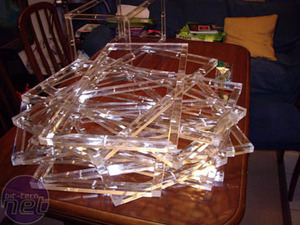
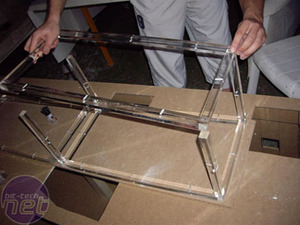
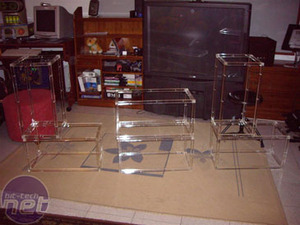
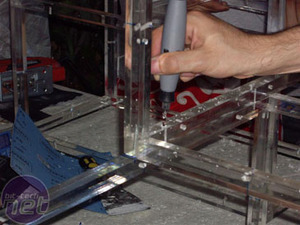
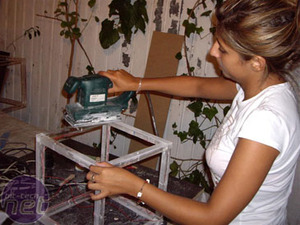







Want to comment? Please log in.